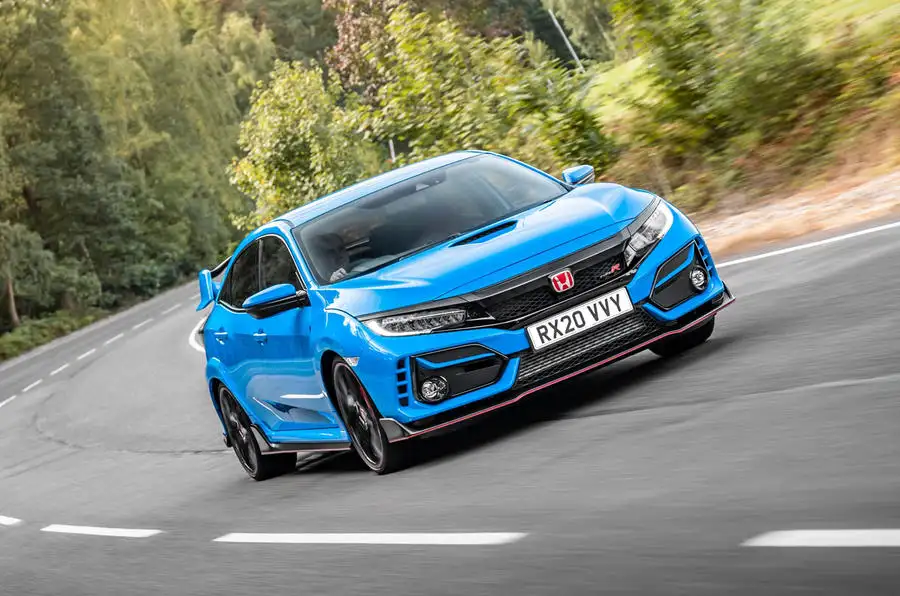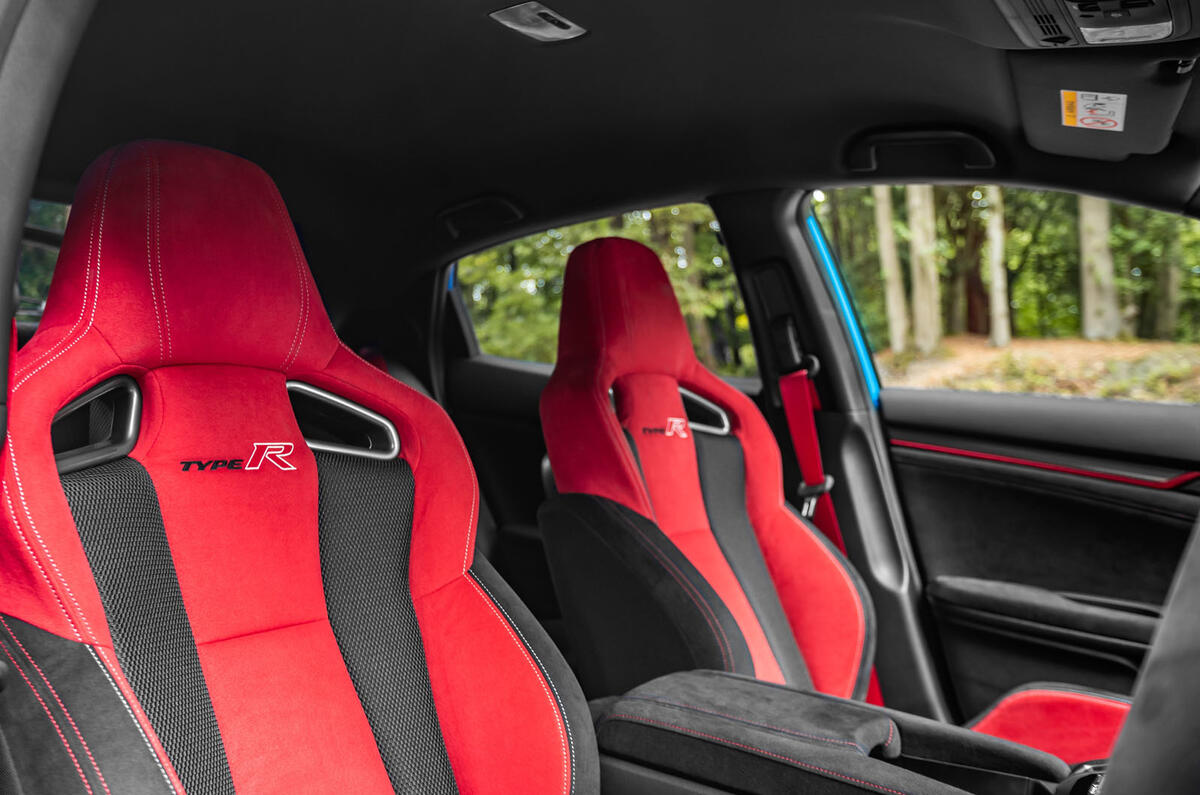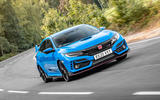What is it?
This is the 2020 Civic Type R, meaning a subtly tweaked version of Honda’s hottest ever hot hatch. In fairness, there wasn’t a lot wrong with the original - known as the FK8 by savvy Civic spotters - that made its debut in 2017.
The second generation of turbocharged Type R, it did a fine job of melding spectacular straight-line pace with a chassis that magically blended acrobatic agility and adjustability with cast-iron control and just enough comfort. It was arguably one of the most complete cars of its type, with its pace, poise and practicality helping it nail the hot hatch brief to the letter.
So it comes as no surprise to discover Honda hasn’t deviated too far from the winning formula with this update. In fact, it has added some extra bandwidth to the line-up, bookending it with the inclusion of a both a more subtle Sportline model and an extreme Limited Edition.
All the versions of the new Type R are treated to the same tweaked nose that features a 13%-larger grille for improved cooling. Drive hard on a track and the new car is claimed to keep engine temperatures 10deg C lower than before. There are also some tweaks to the aerodynamics around this area to offset the change in aero balance created by the bigger intake. Overall though, the visual upgrades are of the ‘blink and you’ll miss them’ variety.
Under the skin are new two-piece front brake discs that have been tuned for better pedal response and improved cooling. Behind these are stiffer bushes in the front suspension that increase longitudinal stiffness by 10%, while at the rear there’s 8% more lateral control. While they were there, the engineers also gave the adaptive dampers a digital massage, with an increased sampling rate helping them react faster in all three (Comfort, Sport and R+) driving modes.
The changes are minimal inside but reserved for the most important areas: the steering wheel and the gear lever. The former gets an Alcantara-trimmed rim, while the latter gets a new, egg-shaped aluminium knob that has been carefully weighted for an improved shift action.
As for the new models, the Sportline comes on stream early in 2021 and is the Q-car (relatively speaking) of the range, with its deleted tea tray rear spoiler, smaller (19in) alloys and seats trimmed in sombre black rather than the retina-scorching red of the standard car. It’s still clearly a Type R, but its lower-profile wing makes it a little less yobbo.
The Limited Edition is claimed to be the most extreme Type R yet. Just 100 are being built for Europe and all are identified by their black roof panels, door mirrors and bonnet vent, plus the lighter BBS forged alloy wheels that are wrapped in Michelin Pilot Sport Cup 2 rubber. There are also some tweaks to the dampers and steering maps to compensate for the reduction in unsprung mass and increase in grip.
Inside, there’s no infotainment or air conditioning, while lots of sound-deadening has been ditched. The result is a car that tips the scales at 47kg (10kg of that comes from the wheels) less than the GT.
In all other respects, the cars are as before, with the same 316bhp turbocharged 2.0-litre four-cylinder engine under the bonnet that drives the same front wheels through the same six-speed gearbox and limited slip differential.






















































Join the debate
Add your comment
An unorthodox opinion. I actually prefer the outgoing model!
I decided to ignore what appears to be basically Honda marketing department led changes and replace my excellent much-loved 2017 FK8 with one of the last '2019' models (built just pre-lockdown), benefitting from a hefty discount and better trade-in prior to the 2020 car launched.
Reasons: obviously a personal opinion with a side-order of practicallity but, Alcantara steering wheels have no place in road cars (unless used with gloves), there's the inevitable wear and they are, ironically (if this stuff bothers you) an ideal Covid breeding ground!... digital sound enhancement?... on a Honda Type R?... there was nothing wrong with the way the old car sounded, fairly quiet yes, but that's a turbo four for you. Again, nothing wrong with the way the old car stopped either, so I wouldn't be surprised if the move from cross-drilled brakes aren't simply a cost-saving or just a supplier change. I do love the new blue, but feel it's overkill on the heavily styled body anyway. So that just leaves the new 'weighted' gear knob - which I'm sure I can retro-fit to my Championship white car if I so wish!
This has to be my favourite hot hatch
Looks amazing in blue. Glad they now provide the 'toned down' version as an option.
Buy Online Red Snapper Fish
Greetings! Very useful advice in this particular article! It is the little changes that make the most important changes. Many thanks for sharing! By the way, if you're want to Buy Online Red Snapper Fish? Then feel free and visit our website.
JamesDavid wrote:
Shut up and take my money!